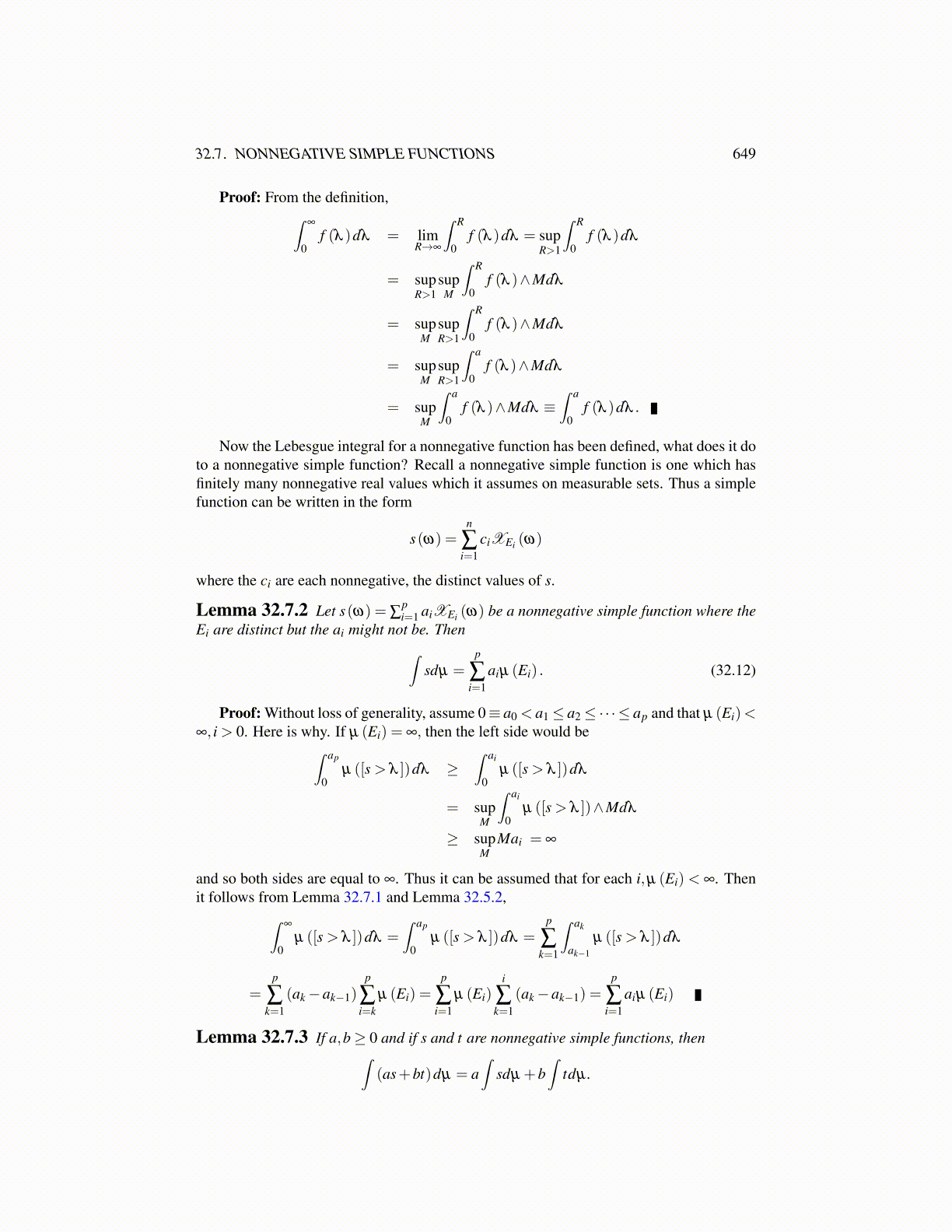
32.10. INTEGRALS OF REAL VALUED FUNCTIONS 649
Next note that if a is real and a ≥ 0,(a f )+ = a f+,(a f )− = a f− and if a < 0,(a f )+ =−a f−,(a f )− =−a f+. This follows from a simple computation involving the definition off+, f−. Therefore, if a < 0,∫
a f dµ ≡∫
(a f )+ dµ −∫
(a f )− dµ =∫
(−a) f−dµ −∫
(−a) f+dµ
By Theorem 32.9.1,
=−a(∫
f−dµ −∫
f+dµ
)= a
(∫f+dµ −
∫f−dµ
)≡ a
∫f dµ
The case where a ≥ 0 is easier.Now that we understand how to integrate real valued functions, it is time for another
great convergence theorem, the dominated convergence theorem.
Theorem 32.10.5 (Dominated Convergence theorem) Let fn ∈ L1(Ω) and suppose
f (ω) = limn→∞
fn(ω),
and there exists a measurable function g, with values in [0,∞],2 such that
| fn(ω)| ≤ g(ω) and∫
g(ω)dµ < ∞.
Then f ∈ L1 (Ω) and
0 = limn→∞
∫| fn − f |dµ = lim
n→∞
∣∣∣∣∫ f dµ −∫
fndµ
∣∣∣∣Proof: f is measurable by Corollary 32.2.7. Since | f | ≤ g, it follows that
f ∈ L1(Ω) and | f − fn| ≤ 2g.
By Fatou’s lemma (Theorem 32.8.2),∫2gdµ ≤ lim inf
n→∞
∫2g−| f − fn|dµ
=∫
2gdµ − lim supn→∞
∫| f − fn|dµ.
Subtracting∫
2gdµ ,
0 ≤− lim supn→∞
∫| f − fn|dµ.
Hence
0 ≥ lim supn→∞
(∫| f − fn|dµ
)≥ lim inf
n→∞
(∫| f − fn|dµ
)≥ lim inf
n→∞
∣∣∣∣∫ f dµ −∫
fndµ
∣∣∣∣≥ 0.
This proves the theorem by Lemma 3.3.17 because the limsup and liminf are equal.2Note that, since g is allowed to have the value ∞, it is not known that g ∈ L1 (Ω) .